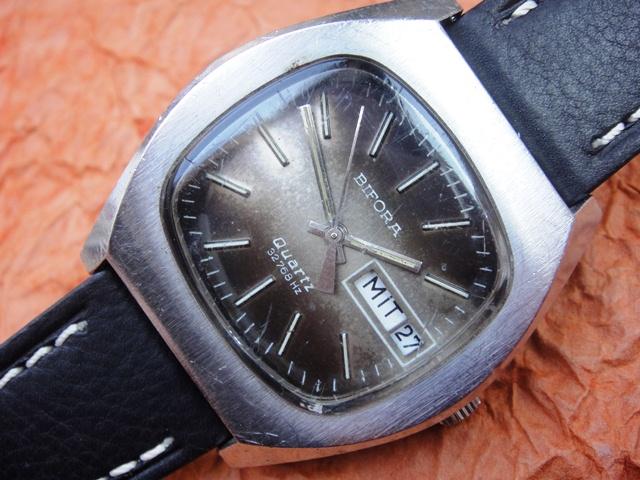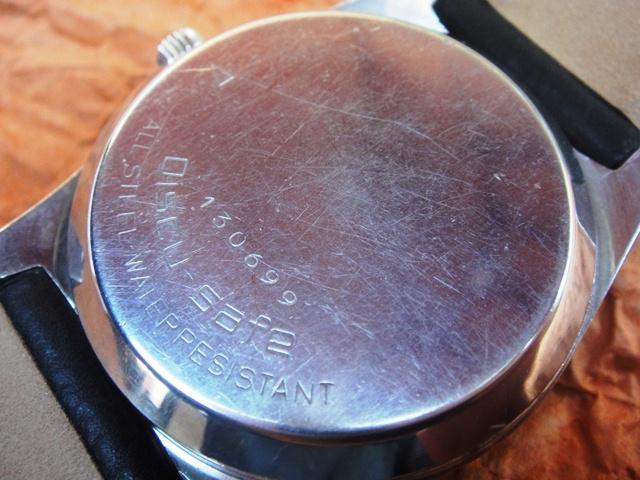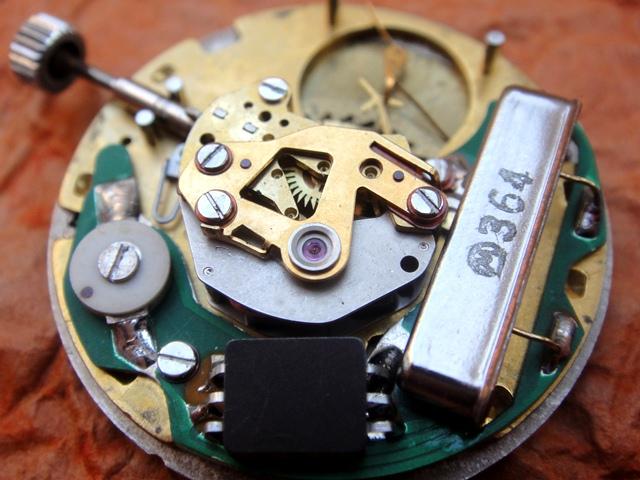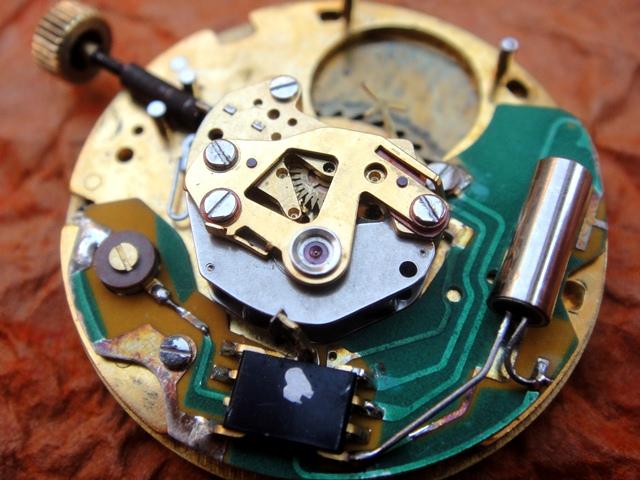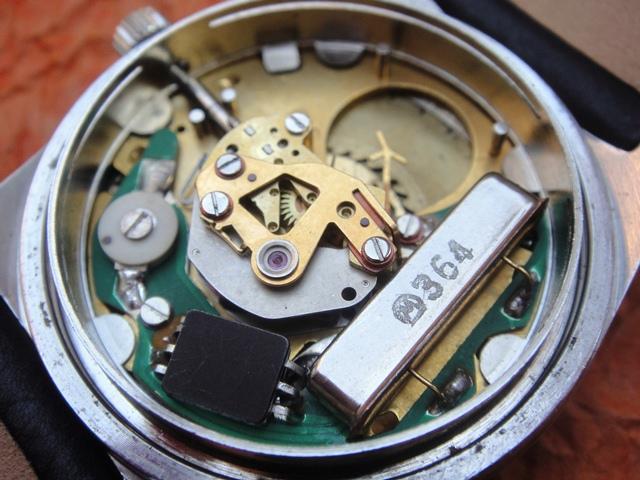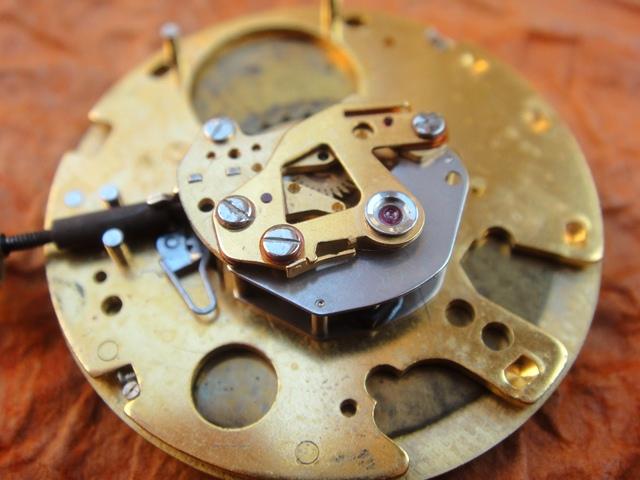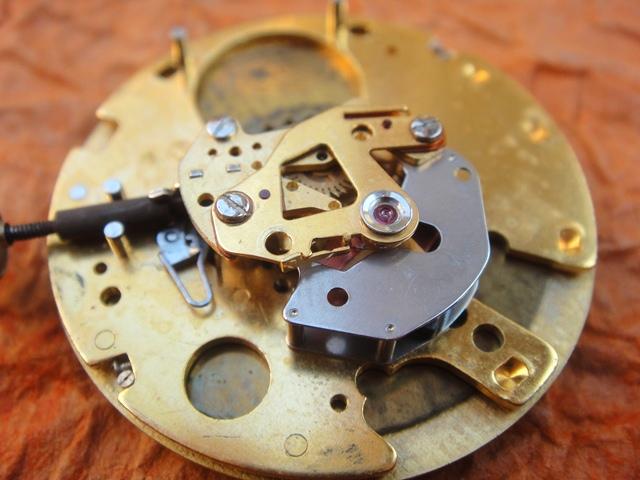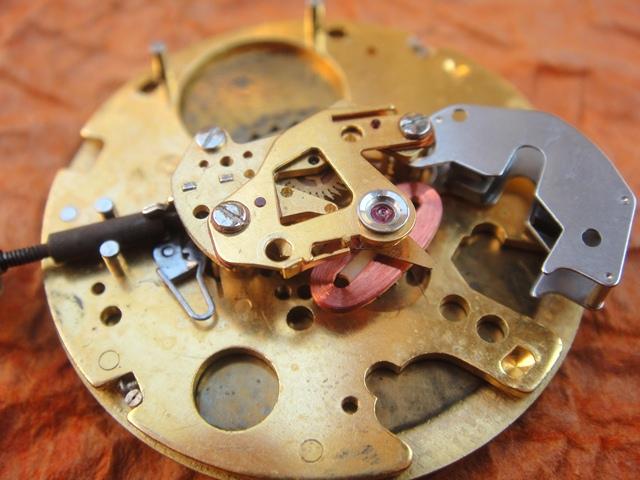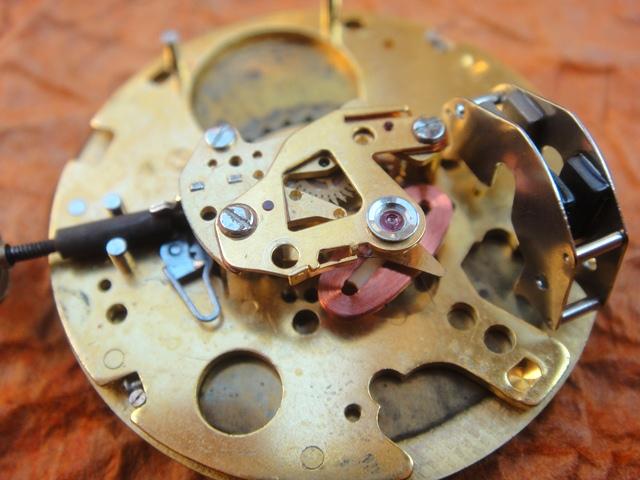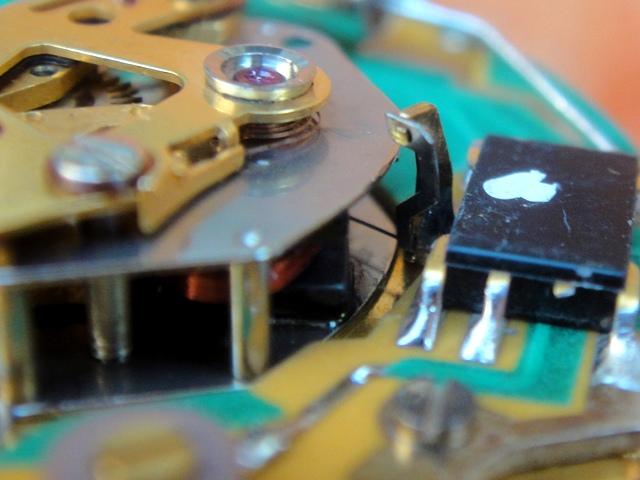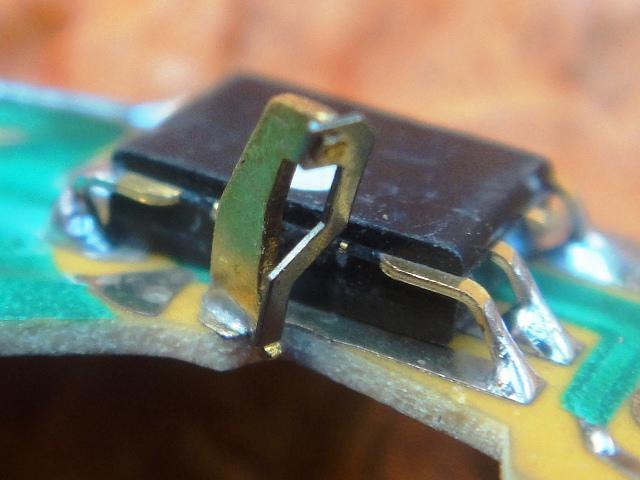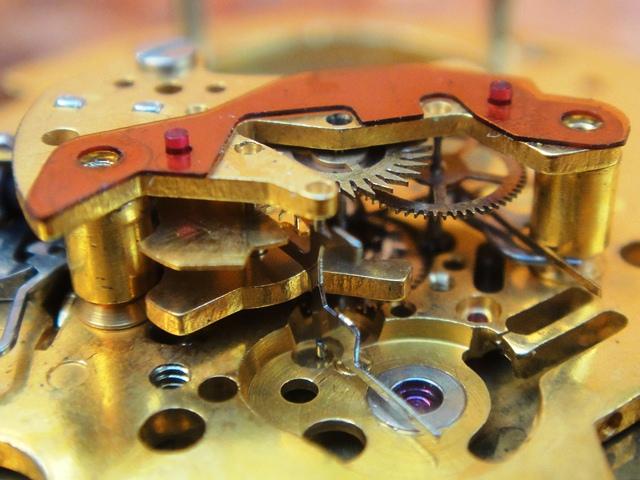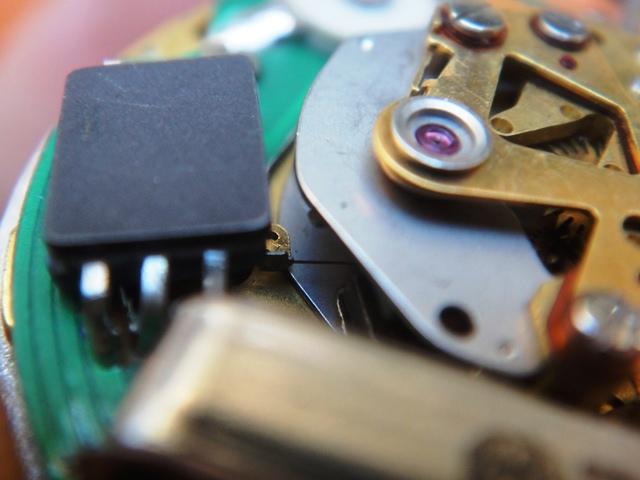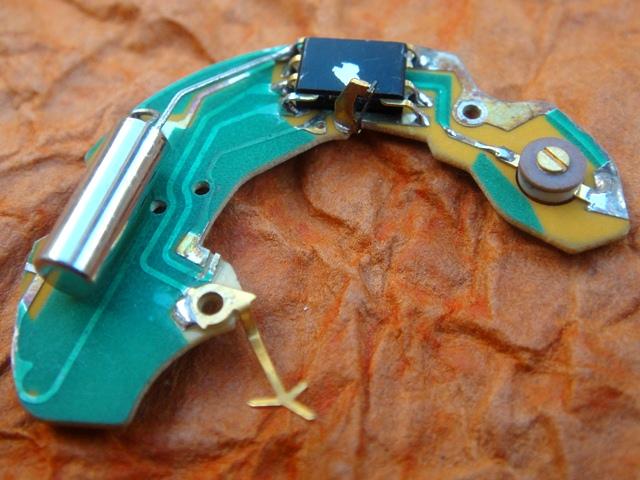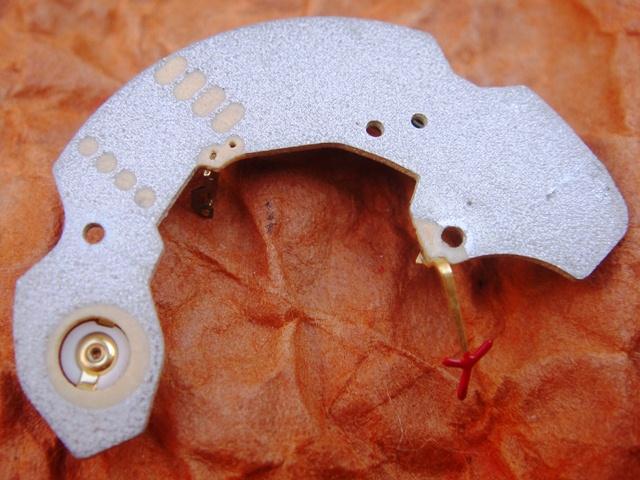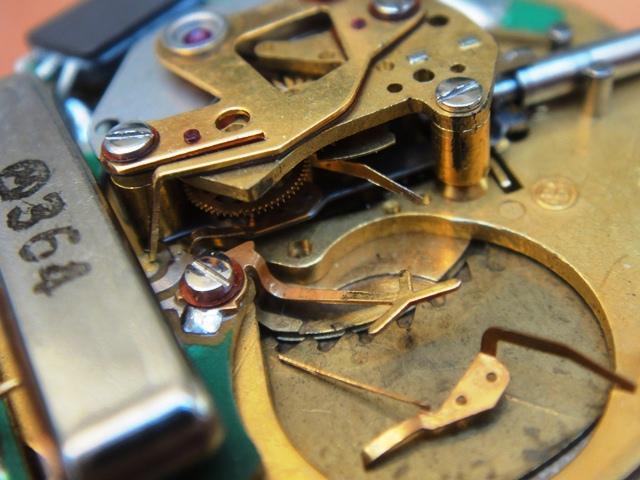BIFORA B12 QUARTZ 1973
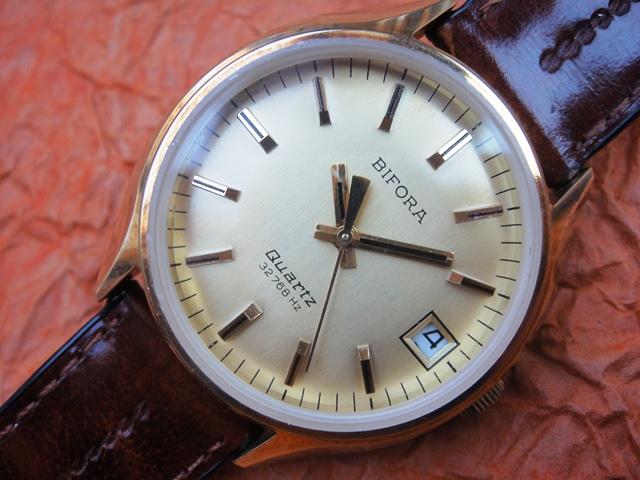 Bifora Uhrenfabrik was the name of a German company established by Joseph Bidlingmaier in 1900. It was known for inhouse development of movements unfortunately it ceased to exist in 1977. With a short episode of the brand being used by a dealer from India a new entity has been recently established in the same town of Schwabisch Gmünd thus modern Bifora watches might once again hit the market. The B12 from 1973/74 was their only quartz movement based on a short lived electric B10 /11. Bifora movements are known for extremely poor appearance but they are reliable although this quartz is clearly overengineered. It follows the early quartz concept of an oscillating balance with coil that rotates with one beat per second known from the Arctos 375 or MegaQuartz.
Bifora Uhrenfabrik was the name of a German company established by Joseph Bidlingmaier in 1900. It was known for inhouse development of movements unfortunately it ceased to exist in 1977. With a short episode of the brand being used by a dealer from India a new entity has been recently established in the same town of Schwabisch Gmünd thus modern Bifora watches might once again hit the market. The B12 from 1973/74 was their only quartz movement based on a short lived electric B10 /11. Bifora movements are known for extremely poor appearance but they are reliable although this quartz is clearly overengineered. It follows the early quartz concept of an oscillating balance with coil that rotates with one beat per second known from the Arctos 375 or MegaQuartz.
The movement is so bloody plain that I must admit that it is one of the least sexy movements in the quartz category except the poor-mans Timex 63. Nevertheless the complexity of the design makes it an interesting piece for a detailed review. It consists of two main visible components being the brass baseplate with gear train including an electro-magnetic balance and the electronic module with quartz, micro chip and trimmer, all fitted to a green ceramic substrate. This module evolved most while electronic components were becoming smaller but the layout and idea remained unchanged. Only very late examples of this calibre were redesigned with the coil fitted externally to the gear train. Very likely the calibre number changed with this modification but it is currently not known to me.
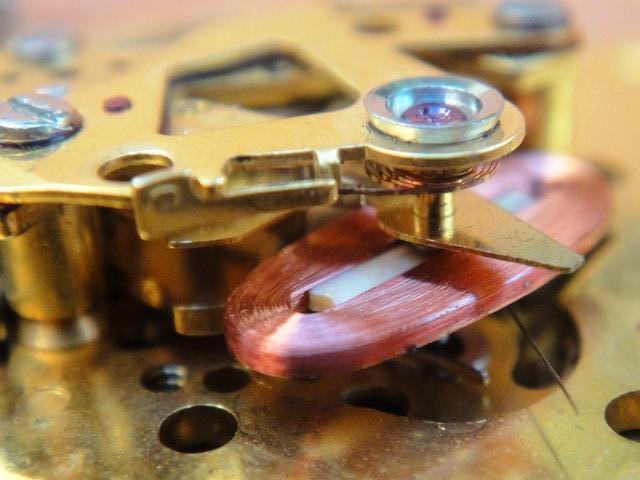 To reach the intriguing balance with electro-magnetic coil you first have to remove the electronic module (tricky! hint below) and slide away the magnet assembly composed of 2 layers of permanent ferrite magnets glued to 2 sheets of stainless steel. The balance assembly has a lot in common with German electrics such as PUW with a double hairspring - 1 on top and 1 on the bottom providing current from the electronic module. A drawback in the Bifora in comparison to the PUW is that the bottom hairspring does not have an easy or smart mount to the electronic module (a screw for instance). Instead it simply hangs freely from the balance and requires a skillful procedure to attach it to a tiny clip on the module. The shape of the clip holding the bottom hairspring will vary slightly depending on module generation.
To reach the intriguing balance with electro-magnetic coil you first have to remove the electronic module (tricky! hint below) and slide away the magnet assembly composed of 2 layers of permanent ferrite magnets glued to 2 sheets of stainless steel. The balance assembly has a lot in common with German electrics such as PUW with a double hairspring - 1 on top and 1 on the bottom providing current from the electronic module. A drawback in the Bifora in comparison to the PUW is that the bottom hairspring does not have an easy or smart mount to the electronic module (a screw for instance). Instead it simply hangs freely from the balance and requires a skillful procedure to attach it to a tiny clip on the module. The shape of the clip holding the bottom hairspring will vary slightly depending on module generation.
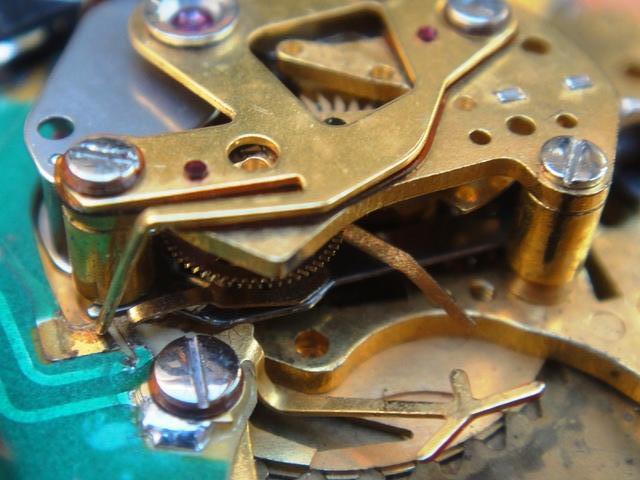 Hint: Be extremely careful when removing the electronic module. 1) Open the clip with a tiny pin or tweezer tips and using tweezers gently remove the hairspring tip without damage. 2) Additionally you need to loosen the thin insulated plate mounted on top of the gear train as one sharp end, that provides current, is holding the electronic substrate (right picture). Btw. if this pin is not connected to the substrate or the plate is not properly insulated - the watch will not work! 3) It's also worth to notice the proper position of the end-piece/pin of the positive polarity battery clamp which is attached to the setting clutch. It has to touch an exact trace on the substrate to make the watch work and it hacks/disconnects the circuitry upon pulling out the crown!
Hint: Be extremely careful when removing the electronic module. 1) Open the clip with a tiny pin or tweezer tips and using tweezers gently remove the hairspring tip without damage. 2) Additionally you need to loosen the thin insulated plate mounted on top of the gear train as one sharp end, that provides current, is holding the electronic substrate (right picture). Btw. if this pin is not connected to the substrate or the plate is not properly insulated - the watch will not work! 3) It's also worth to notice the proper position of the end-piece/pin of the positive polarity battery clamp which is attached to the setting clutch. It has to touch an exact trace on the substrate to make the watch work and it hacks/disconnects the circuitry upon pulling out the crown!
Keywords: bifora, mikado, yema, 32768 Hz
Market value: 10-150$ (brand, condition, box)

